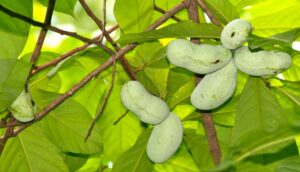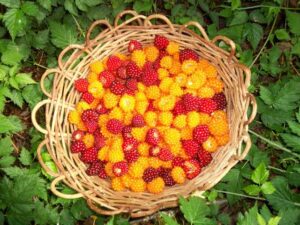Back to: Botany 500 Level
I’m so excited to have you with me today as we explore a fascinating topic: Non-Timber Forest Products (NTFPs): Resins, Latex, Gum, Fruits. This is a topic that connects nature, the economy, and culture in a very special way. NTFPs are products derived from the forest, but they aren’t timber or wood. Instead, they’re the other valuable resources that come from the trees and plants around us. These resources are essential in local communities and are key to both environmental sustainability and cultural traditions. Let’s jump into it!
NTFPs: resins, latex, gum, fruits
Forests are not just places filled with trees; they are ecosystems teeming with life and resources. While timber (wood) is one of the most valuable products from the forest, there are many other non-timber forest products (NTFPs) that are equally important. These include resins, latex, gum, and fruits. These resources serve as food, medicine, and even a source of income for many communities. Today, we’ll explore these products in-depth, how they are used, and why they are so valuable, especially in the context of Nigeria’s rich biodiversity. Ready? Let’s get started!

Body – NTFPs: Resins, Latex, Gum, and Fruits
- Resins
- What are Resins?: Resins are sticky, sap-like substances that are secreted by certain plants, especially trees. In Nigeria, resins are collected from trees like the African Blackwood (Dalbergia melanoxylon) and Frankincense (Boswellia spp.). They are often used in perfumes, incense, and sometimes even for medicinal purposes.
- Uses of Resins: Resins have been historically used for making incense, perfumes, and aromatic oils. In Nigeria, resins from the Frankincense tree are often used in traditional rituals and ceremonies, where the smoke from burning resins is believed to have spiritual significance. Some resins also have medicinal properties and are used in treating wounds and skin infections.
- Cultural Importance: Resin is used in Nigerian communities for various spiritual and ceremonial purposes. It’s often burned during religious rites or used in traditional healing practices.
- Latex
- What is Latex?: Latex is a milky fluid that comes from the sap of certain trees and plants. The most well-known source of latex is the rubber tree (Hevea brasiliensis), which is widely grown in Nigeria for its commercial value. Latex is used to make rubber products such as tyres, footwear, and gloves.
- Uses of Latex: In Nigeria, latex from rubber trees is collected and processed into rubber for industrial uses. It plays an essential role in Nigeria’s rubber industry, which is a significant contributor to the economy. Aside from rubber, latex can also be used in making adhesives and other materials.
- Cultural Importance: Latex has an important role in the local economy of Nigeria, especially in the southeastern part of the country, where rubber plantations are abundant. The rubber industry provides jobs and supports small-scale businesses in rural areas.
- Gum
- What is Gum?: Gum is a thick, sticky substance obtained from the bark of certain trees. One of the most well-known gums in Nigeria is Gum Arabic, which comes from the Acacia tree. This gum has been used for centuries in both traditional and modern applications.
- Uses of Gum: Gum Arabic is commonly used in food production as a stabiliser or emulsifier. It is also used in making inks, paints, and in pharmaceuticals. Additionally, it has medicinal uses and is often used to treat digestive issues, coughs, and colds in local Nigerian medicine.
- Cultural Importance: Gum Arabic has cultural significance in many Nigerian communities, especially among nomadic and rural populations. It is often harvested by hand and serves as an additional source of income for farmers and rural families.
- Fruits
- What are Fruits from Forests?: In many Nigerian forests, fruit-bearing plants provide a wide range of edible products. These fruits are not only important for the diet but also for cultural and economic reasons. Some of the notable fruit species include African Mango (Irvingia gabonensis), Bush Mango (Dacryodes edulis), and Wild Plum (Vangueria spp.).
- Uses of Fruits: Fruits from the forest serve as food, providing valuable nutrients and vitamins. For example, African mangoes and bush mangoes are rich in fat and proteins, making them an important source of nutrition in rural communities. These fruits are eaten raw, used in cooking, or even processed into oils. The wild plum is also used in making local jams and juices.
- Cultural Importance: Many of these fruits have cultural significance and are used in traditional ceremonies, feasts, and festivals. They are often seen as symbols of fertility, prosperity, and good health.

Why NTFPs are Important for Nigeria
- Environmental Sustainability: NTFPs are vital for forest conservation. By harvesting resins, latex, gums, and fruits, communities can generate income without completely cutting down trees. This helps reduce deforestation and encourages sustainable forest management practices.
- Economic Contribution: NTFPs contribute significantly to local economies. In rural areas, products like gum, latex, and fruit serve as alternative sources of income. For instance, the trade of gum arabic has supported the livelihoods of farmers for centuries. Likewise, the rubber industry provides jobs and boosts the national economy.
- Cultural Significance: Beyond their economic value, NTFPs hold cultural and spiritual importance. Whether it’s using gum in traditional medicine or burning resins during a ceremony, these products are deeply embedded in the cultural practices of many Nigerian communities.
Real-Life Example
Imagine walking through a forest in the Niger Delta, where you come across a group of local farmers carefully tapping a rubber tree for latex. You can hear the gentle trickle of latex into the containers below. Later, you visit a village where the fruits of African Mango are being sold at the local market. People in the community are not only eating the fruit but also using the oil extracted from the seeds in traditional beauty products. In both cases, NTFPs are creating a bridge between nature, economy, and culture, supporting both the environment and the people who rely on them.

Summary:
- NTFPs like resins, latex, gum, and fruits play crucial roles in Nigerian forests, serving as food, medicine, and income sources.
- Resins are used for incense and rituals, latex is tapped from rubber trees for industrial use, gum is valuable in food production, and forest fruits provide nutrition.
- These products are vital for environmental sustainability, economic growth, and cultural practices, particularly in rural Nigerian communities.
Evaluation:
- How is gum arabic used in Nigeria, and why is it significant?
- What are the main uses of latex from rubber trees in Nigeria?
- How do fruits like African Mango contribute to local communities in Nigeria?
You’ve done an amazing job learning about Non-Timber Forest Products and their value in Nigeria. These products are much more than just resources—they connect us to the land, to culture, and to the economy. Keep up the great work, and let’s continue on this exciting learning journey!
